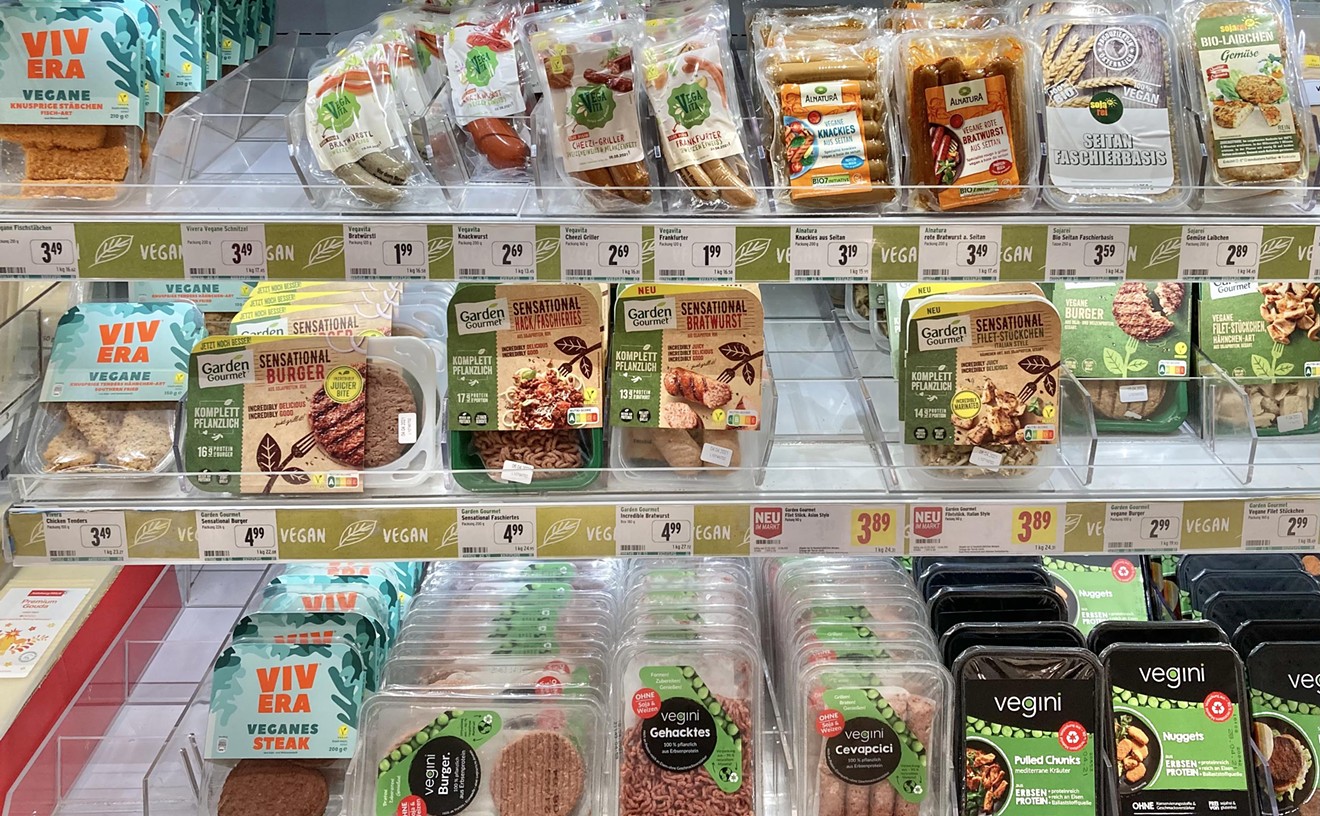Ever tried sloe Gin? (It’s a sort of reddish-purple color — not clear — if you’re trying to picture it.) If so, then you've most likely you've had it in a sloe gin fizz (sloe gin, lemon juice, egg white, sugar to taste) since you certainly didn’t order it neat, as a digestif, like a Brit from South West England would. Either way, the sloe gin you tried was very likely a product of the Plymouth brand, made by Black Friars Distillery, who, make Plymouth-style gin in Plymouth, England as required by law. Its a bit confusing and we've never seen another brand on backbars around town.
Although that will very possibly change in the Phoenix area soon.
Spirit Works Distillery, hailing from the the sleepy Sonoma County town of Sebastopol, recently announced plans for entry into the Phoenix market. This is particularly exciting since they're currently the only American producer of sloe gin.
“If someone else is making sloe gin in the country then we don’t know who they are,” says Jessica Shumaker, Marketing Director for Spirit Works. It’s her job, she says, to keep Google alerts for such things. So far, no other US company can lay claim to the rare gin product.
Owners Timo and Ashby Marshall have brought a West-coast mentality to the English spirit. Aside from Timo being an owner — the business side, the face, and the crucial British accent — the distillery boasts an all-female team and makes a version of sloe gin that's less sweet than English style. This is a good thing. It's made using the distillery’s gin base, which of course is made from their vodka base, which in turn they distill themselves from 100% Californian red winter wheat. That’s single variety, sipping, folks. It's especially exciting considering the company is currently aging the spirit in white oak casks to turn it into whiskey, which is seldom comprised of only one variety of grain, whether corn or rye. Furthermore the vodka is only distilled once — a rejection of the idea that vodka must be chiefly pure and devoid of flavor. Instead Spirit Work's product retains much of the sweet, toasty and rich grain flavor of the red winter wheat. Any bar that seeks distribution through Hensley Beverage Company, which also circulates hip brands like Seattle’s Sun Liquor or local favorites like AZ Distilling Co.) now has access to Spirit Works Sloe Gin.
The attraction to the product is in its niche qualities and the English tradition it’s built on. Sloe gin is a category unto itself and tastes a little like pie. Or, at least, spiked pie filling — or a very boozy, fruity wine. It’s deep, dark, and usually cloyingly sweet on its own.
It really doesn’t resemble gin at all.
Long ago, all across the coastal stretches of South West England, the jagged coast line opened its arms to an invasive species of bush called blackthorn, which produces a small blue berry. It's not a blueberry, though you could be fooled by Google images in thinkings so. It’s a sloe — it has a small pit, and so classifies as a drupe, like small plum — and its too terribly bitter to eat on its own.
But a fork could puncture it and gin, with about three months time could unlock its flavor. Sugar could fix any issue of lingering bitterness. Sloe gin was thus born.
Today, as Shumaker tells it, a little old lady of Timo Marshall's family, still living in South West England, wanders out into the nearby thicket of blackthorn. Its white flowery blossoms teem in bunches at the end of its dark branches. She’ll walk up to the bush and hit it with the end of her cane until bunches of sloe berries fall off, which she’ll then collect from the ground.
The sloes are allowed to steep in gin, with plenty of sugar, until all dissolved and extracted. Then it’s poured after dinner, as we’d mentioned above, as a sweet, dessert-like digestif.
That’s the way Shumaker says distillery owner Timo Marshall’s family has been making it for generations in a small coastal town in Southwest England. These are the towns we have to thank for cheddar — from the Town of Cheddar, in Somerset — or for Devonshire tea with its scones and its clotted cream and jams. Or Plymouth gin of Plymouth, in nearby Devonshire.
And now we can thank them for sloe gin, all the way from Phoenix.
Coming to the Valley hits close to home for both Ashby, the head distiller, and Shumaker. Ashby went to school at Arcadia High School, before meeting Timo later in life doing ecological work aboard a ship at sea. Shumaker went to school at Xavier College Preparatory in Phoenix. The market made a lot of sense to the young company that is still growing their presence outside of the Bay area, where their product is known to and used by many in-the-know San Fransisco bars. The renowned Trick Dog is one, using Spirit Works' product in their Castro Theatre cocktail: Black Grouse scotch, Lillet, Gran Classico, Spirit Works sloe gin, and dandelion.
Being less sweet than traditional sloe gin, the Marshall’s sloe gin is better suited for sophisticated cocktails and an American craft palate, which has a different sugar quota than the American palate-at-large. It could act like a gin, but a bartender will taste it, Shumaker says, and much more often treat it like sweet vermouth, due to its wine-y profile. “Some haven’t used it before. But then they taste it and that’s when the gears start turning.” Shumaker says Ashby and Timo started with the Marshall family recipe first, and took many trips back home to drink varying recipes with the family experts, and tweaked it from there — less sweet and grain-to-glass being the chief differences. They get their organic sloe berries shipped from Bulgaria, too (though the invasive species would take take big a liking to the California Coast if they were allowed to grow there).
We’re curious what Phoenix bartenders will do with the spirit that’s simultaneously dark and tart, fruity and boozy. One blogger made something called a Hermoine Granger — but we think some better, dark magic could be made of the now-American product.
[
{
"name": "Air - MediumRectangle - Inline Content - Mobile Display Size",
"component": "18478561",
"insertPoint": "2",
"requiredCountToDisplay": "2"
},{
"name": "Editor Picks",
"component": "16759093",
"insertPoint": "4",
"requiredCountToDisplay": "1"
},{
"name": "Inline Links",
"component": "17980324",
"insertPoint": "8th",
"startingPoint": 8,
"requiredCountToDisplay": "7",
"maxInsertions": 25
},{
"name": "Air - MediumRectangle - Combo - Inline Content",
"component": "16759092",
"insertPoint": "8th",
"startingPoint": 8,
"requiredCountToDisplay": "7",
"maxInsertions": 25
},{
"name": "Inline Links",
"component": "17980324",
"insertPoint": "8th",
"startingPoint": 12,
"requiredCountToDisplay": "11",
"maxInsertions": 24
},{
"name": "Air - Leaderboard Tower - Combo - Inline Content",
"component": "16759094",
"insertPoint": "8th",
"startingPoint": 12,
"requiredCountToDisplay": "11",
"maxInsertions": 24
}
]










